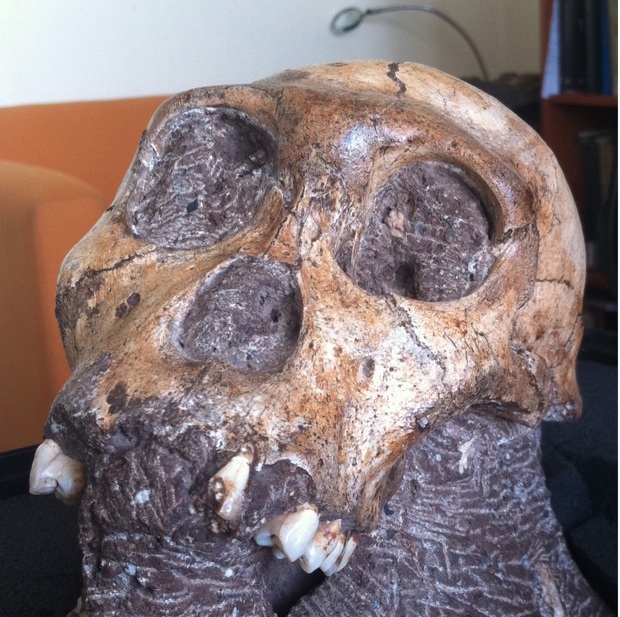Two million year old tartar will crack secret of "cave man" diet


See that crud near the roots of this long-dead bipedal primate's teeth? It's tartar. Two million year old tartar. This is what happens when you don't brush, people -- and don't tell me it's just because the invention of toothbrushes was 70,000 generations in the future.
This tartar in particular is the mineralized remains of the last few meals of an Australopithecus sediba, which may very well be the ancestor of all humans and the "missing link" between the Austrilopithecus genus and our own Homo genus. (Humans, or H. sapiens, are part of the Homo genus.)
This image was snapped by Kate Wong, an editor at Scientific American who covers early human ancestors, and a host of related topics. She's currently reporting from South Africa, where A. sediba was first discovered.
Scientists hope to scrape that tartar off and figure out exactly what "cave men" were eating 2 million years ago, which, according to some, has relevance to what we should eat today.
But first they have to get the tartar off. One way to do it is dental tools, but then you run the risk of damaging the invaluable fossil itself. Another solution is a kind of super mouthwash, a solution including 4 percent hydrochloric acid, which has the (unfortunate from a scientific perspective) effect of whitening prehistoric teeth.
Once the tartar has been removed from the fossil, scientists go at it with microscopes, which allow them to examine the tiny, mineralized remains of the creature's last meals. Telltale signs of past meals include phytoliths, which are tiny minerals produced by plants. This can reveal exactly which plants were consumed. Other bits of grit can provide evidence of a diet of animal flesh, even seafood.
The incredible thing about this process is that it may be literally the only way to obtain direct evidence of what these creatures were eating. It's already yielded insights into the feeding habits of many other human ancestors.
In the modern era, adherents to the paleolithic diet advocate eating what our ancestors were consuming tens of thousands of years ago, before the invention of agriculture. But it would help us understand whether that has any relevance to modern human diets if we could get a sense of how our diets changed even earlier than recent prehistory, so we can gain perspective on what we've been eating for millions, and not just tens of thousands of years.
That's if you believe in the "paleolithic prescription" at all -- it's just as controversial as the status of A. sediba as the Australopithecine ancestor of all humans.
This post was originally published on Smartplanet.com
